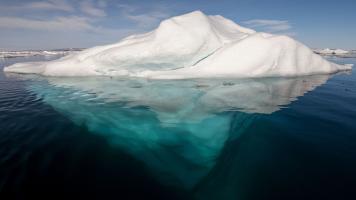
Photo: Andreas Weith
In the summer of 1997, researchers at the U.S. National Oceanic and Atmospheric Administration (NOAA) detected a mysterious ultra-low frequency underwater sound over an acoustic hydrophone array in the Pacific ocean. They had no idea what it was. was it some form of unknown sea mammal? It matched the frequency of some whales, but was like they had ever heard before. Was it a sea monster? Was it something man-made? Whatever it was, it was loud. The sound was heard on multiple sensors over a range greater than 5,000 km. NOAA scientists called the mysterious sound, the the “bloop.” Only fairly recently have researchers concluded that the bloop was an “icequake”, the sound made by the the cracking and fracturing of a large iceberg.
Now, scientists are focusing their hydrophones on glaciers and icebergs and have been hearing a wide range of bloop-like sounds as well as eeire and mournful songs, created as massive blocks of ice in glaciers and bergs rub together and break apart.
Douglas MacAyeal is a a glaciologist at the University of Chicago, who started documenting iceberg sounds at the source. As quoted in Atlas Obscura: A colleague had been studying the tremors, which MacAyeal calls “strange, mournful noises,” and found that the source was a giant iceberg, C-16, that MacAyeal happened to be studying. Instead of listening from the water, MacAyeal planted four seismometers on the iceberg itself. The mournful noises, he found, were produced when C-16 scraped against another giant iceberg (B-15a, as it happened). “When icebergs scrape against each other, it’s like running your finger around the rim of a wine glass,” he says. “They’re so massive that they’ll scrape against each other for hours.”
Here is a short video recording of eerie sounds made by icebergs.
